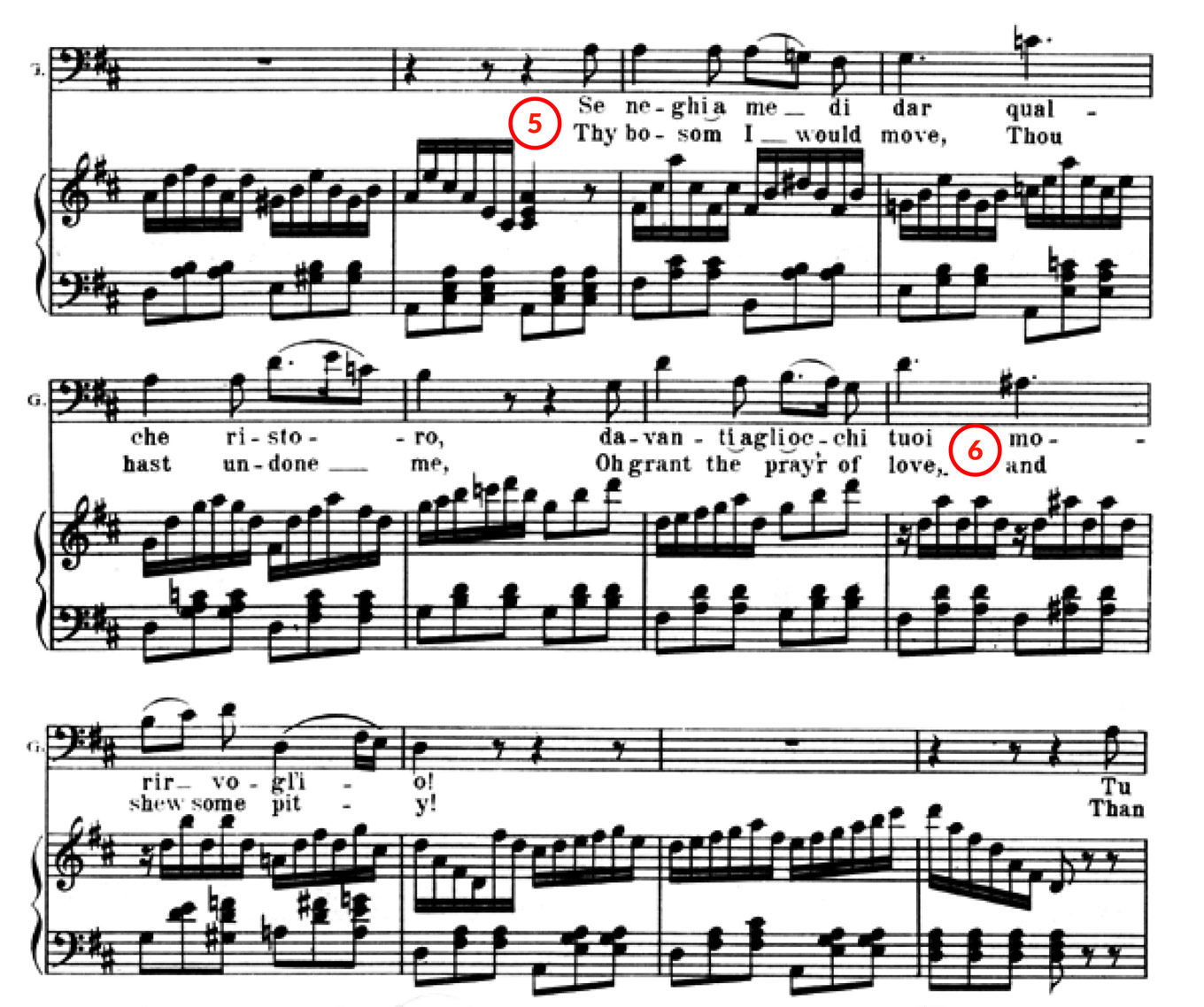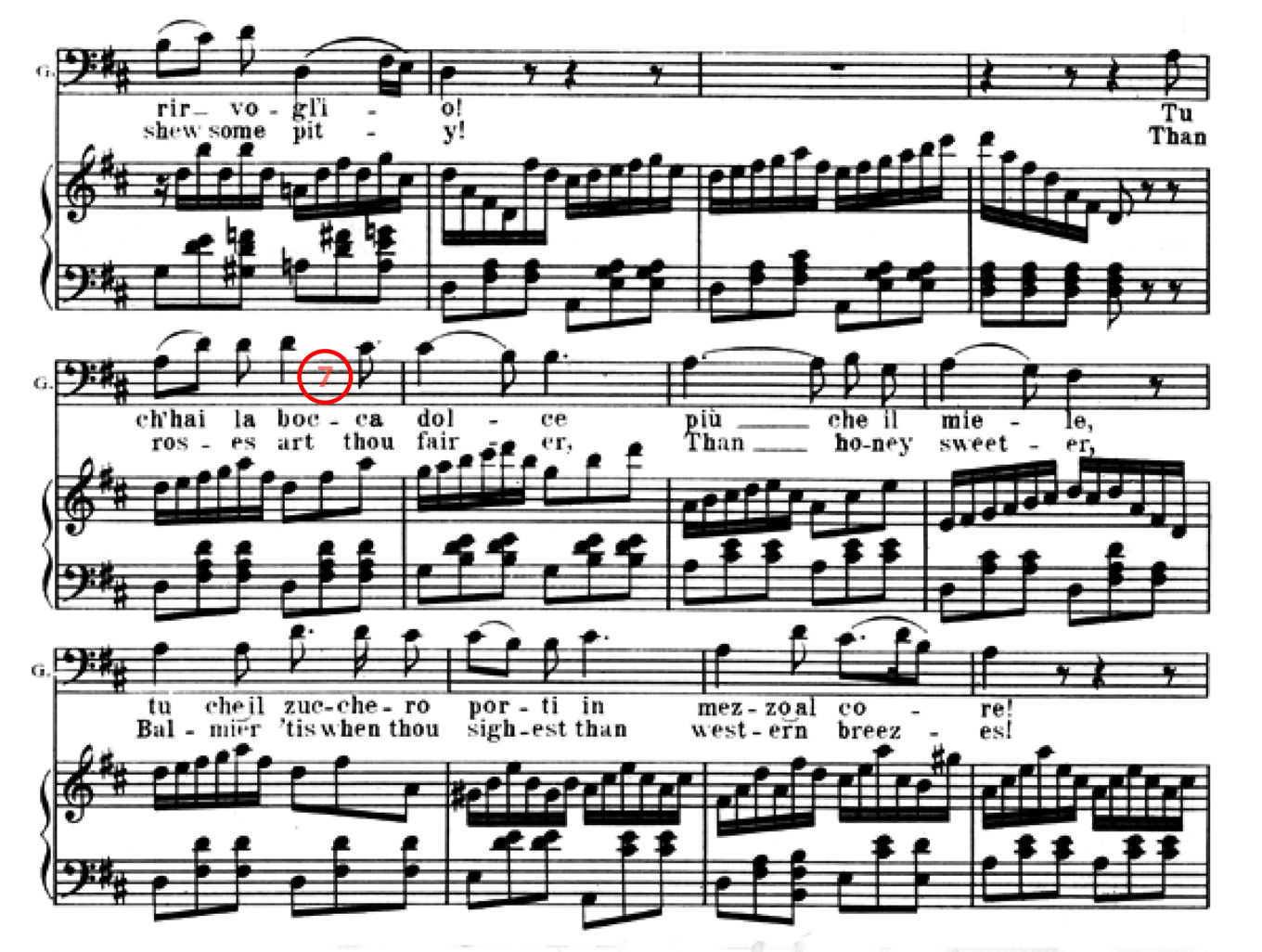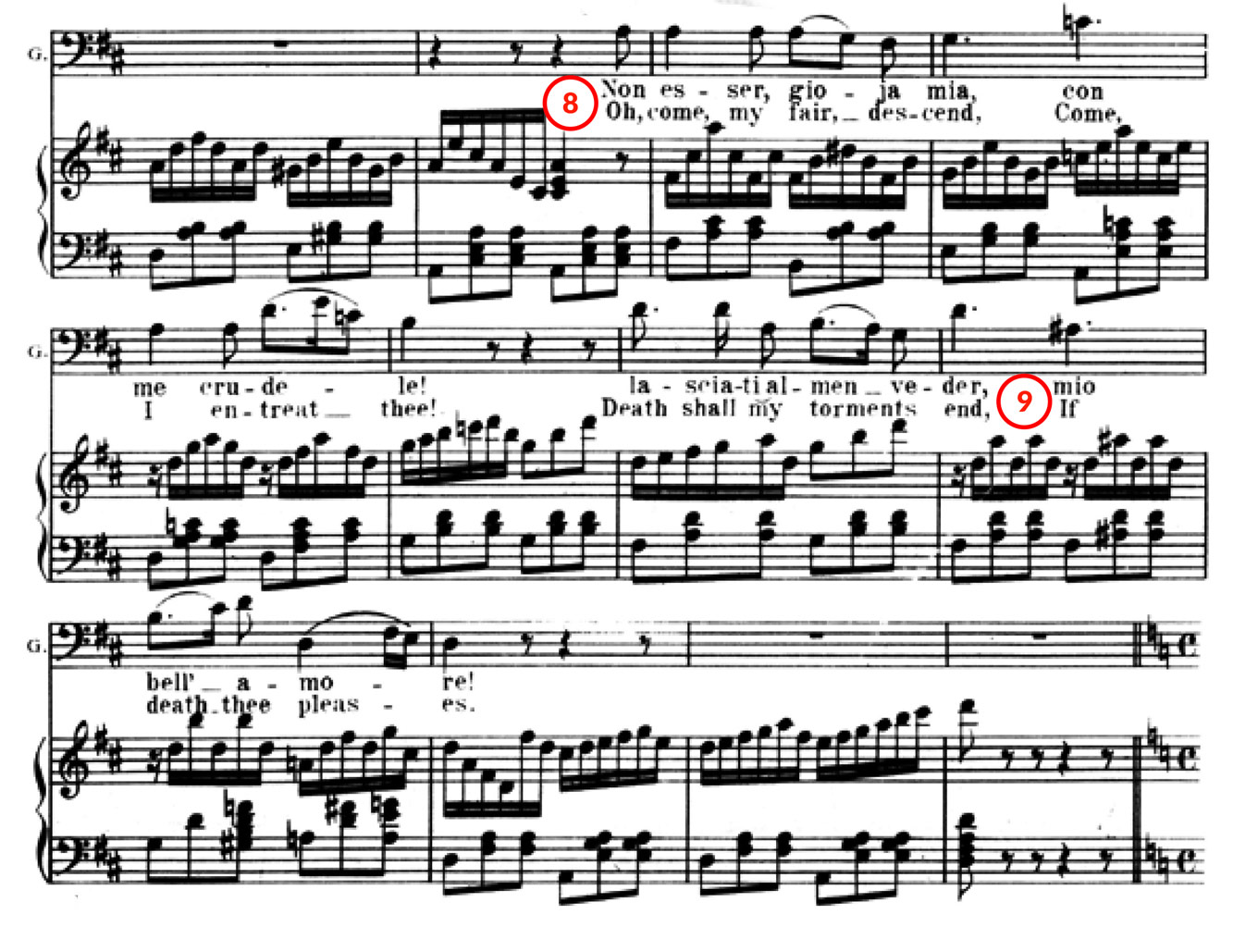
Aria guides: "Deh vieni alla finestra"
How-ToFor good reason, Don Giovanni is one of the most coveted baritone roles in opera. His aria, “Deh vieni alla finestra,” is an incredible scene, a picture of Don Juan in action, unencumbered by angry exes or jealous fiancés. He’s serenading a nameless woman (Elvira’s maid, technically), in that truly Spanish style, with a guitar outside her window. Mozart’s music is perfect and Da Ponte’s words are sexy, and the simplicity of it all gives us a chance to hear Giovanni do the thing he does better than anyone in the world.
Baritones, this pick-up artistry is for you to master (at least in this aria), and this harder-than-it-looks aria is one to take to a voice teacher. In the meantime, here are a few ways to get a head start on the the tricky details. Follow along in the excerpts below, or starting on page 186 of this score.
- I’m a big advocate of singing pick-up notes, and this one is extra-important. Instead of just saying “Come to the window,” Giovanni says “Deh vieni,” which is like saying “Oh come,” or Please come…” It’s the first note that the serenaded lady hears, and a good suitor sounds interested, but not desperate. Any Giovanni worth his salt knows that his easy, confident sound is more than enough.

- Take care with this C-sharp on “finestra”, that it doesn’t fall out of tune or into straight tone. The vowel is often the culprit here; be sure to pick an [i] vowel that has room to vibrate, as though it’s longer than an eighth note.
- The whole bar under “o mio” should feel like a pick-up to “tesoro”. It’s easy to add extra weight on the downbeat of “mio”, but if you were to speak this line, “mio” wouldn’t be where you would find the stress. Mozart is asking you to sustain an idea over the whole bar, sort of like building sexy anticipation.
- This is a similar spot, under “il pianto mio.” Musically, it feels like a new phrase begins in the middle of the bar, under “il…” but it’s really a continuation of the phrase before. It still means you can take a breath if you need it, but be careful not to sit on “il”; instead, treat it like a slow pick-up to “pianto”. The final piece of the puzzle is about creating a release (a diminuendo, actually) for “mio”. Basically, you have to imagine no beats happening after you land on the downbeat under “pianto”. All denouement, and not easy to do.

- These lines should be delivered as though the words are happening to you in the present. There’s a darker tone for “Se neghi a me di dar…”, which happens naturally in the lower tessitura. The first four measures are all one phrase, and it’s another spot where you’ll have to resist adding musical stress to unstressed text. On both “qualche” and “ristoro” the stress is on the first syllable, so be sure to avoid landing on “-che” and “-ro”, despite their being on downbeats.



For good measure, here’s one of my favourite “Deh vieni” renditions, by the timeless Mr. Terfel. That second verse…
Have questions? Want to request an aria for our Aria Guides? Get in touch at [email protected].


Comments